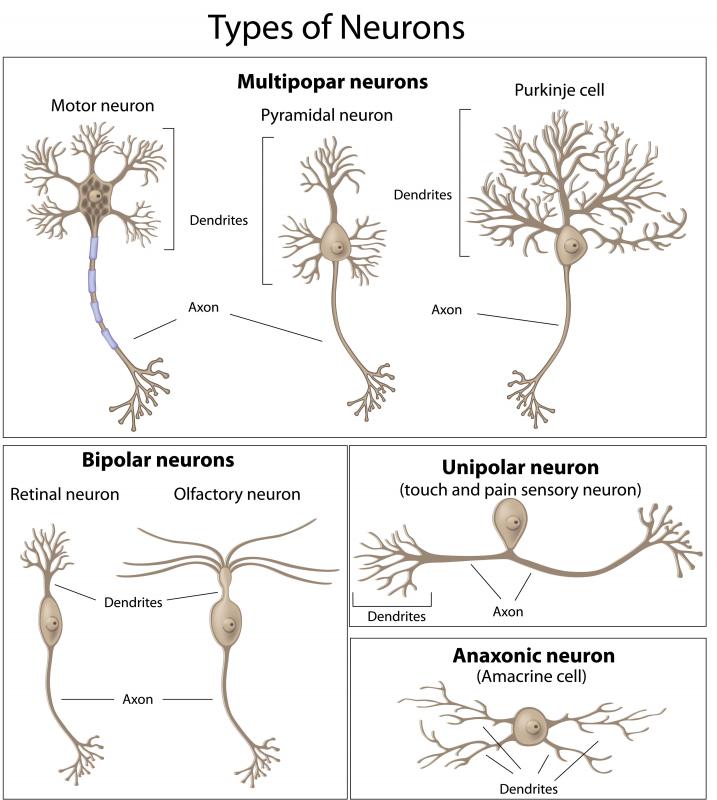At WiseGEEK, we're committed to delivering accurate, trustworthy information. Our expert-authored content is rigorously fact-checked and sourced from credible authorities. Discover how we uphold the highest standards in providing you with reliable knowledge.
What is the Difference Between Axons and Dendrites?
About 100 billion neurons are present in the central nervous system, and the connections or synapses between these neurons can range from a few hundred to as many as 200,000 connections. The three major parts of neurons are soma or the cell body, axon, and dendrites. Although axons and dendrites conduct nerve impulses, they differ in terms of structure, composition, function, and number. With these differences, axons and dendrites are able to maintain the efficient functioning of the nervous system.
Axons and dendrites differ in terms of structure. The term dendrite is derived from the Greek dendron, which means tree. Microscopically, dendrites have a treelike appearance, are heavily branched, and have multiple boutons, terminal knobs, or synaptic knobs. These knobs give dendrites a rough appearance. The branches of dendrites are located near the cell body.

Each neuron typically has a single long and slender axon that branches far from the cell body. The axon extends from the cell body to the neuron’s terminal ending. Axons lack terminal knobs and have a radius that remains constant throughout their lengths, leading to a relatively smooth appearance.
In terms of composition, dendrites have ribosomes but lack myelin, whereas axons have myelin but lack ribosomes. This difference in composition reflects the difference in the function of axons and dendrites. A dendrite functions in the reception of multiple nerve impulses from neighboring cells, and an axon functions in the transmission of nerve impulses away from the cell body. The presence of myelin in axons speeds up the transmission of signals. In terms of numbers, there are more dendrites than axons.

The branching structure of dendrites leads to a large surface area for linking with other neurons and for receiving multiple inputs from other cells. After these synaptic inputs are processed by the cell body, a single output is sent through the axon toward the next neuron or toward an effector organ. The axon may be as short as 0.0004 inch (10 micrometers), but may reach up to 157.5 inches (4 m) in large animals.
To facilitate the fast conduction of impulse, the neuron is often accompanied by a Schwann cell, which produces the myelin sheath that wraps around the axon. From the axon terminal of a neuron to the dendrite of another neuron, the impulse travels through a synapse, which is about 200 to 300 angstroms wide. This whole process occurs in all neurons, whether they are conducting impulses toward the brain or toward the peripheral tissues.
AS FEATURED ON:
AS FEATURED ON:












Discussion Comments
In simpler words, do the dendrites pass the messages along and do the axons carry the messages to the brain so the brain can give a command? I do not understand this very well. You could put it into simpler terms, you know.
@SailorJerry - That's a really good question that I hope someone else will answer for us! Whenever you read about the neural synapse (the space between two nerve cells through which information, in the form of an "action potential," is transmitted), you see only one axon and one dendrite. I also saw something about a neuron transmitting to just one target cell.
So I have the same question as you! If it's a one-to-one relationship, what are all the dendrites for?
Maybe this is a dumb question, but if there is just one axon and many dendrites per neuron (allowing the cell to receive information from many other cells, I suppose) does that mean that each axon will transmit to one dendrite each from many other cells? What else would all the dendrites be for?
Post your comments